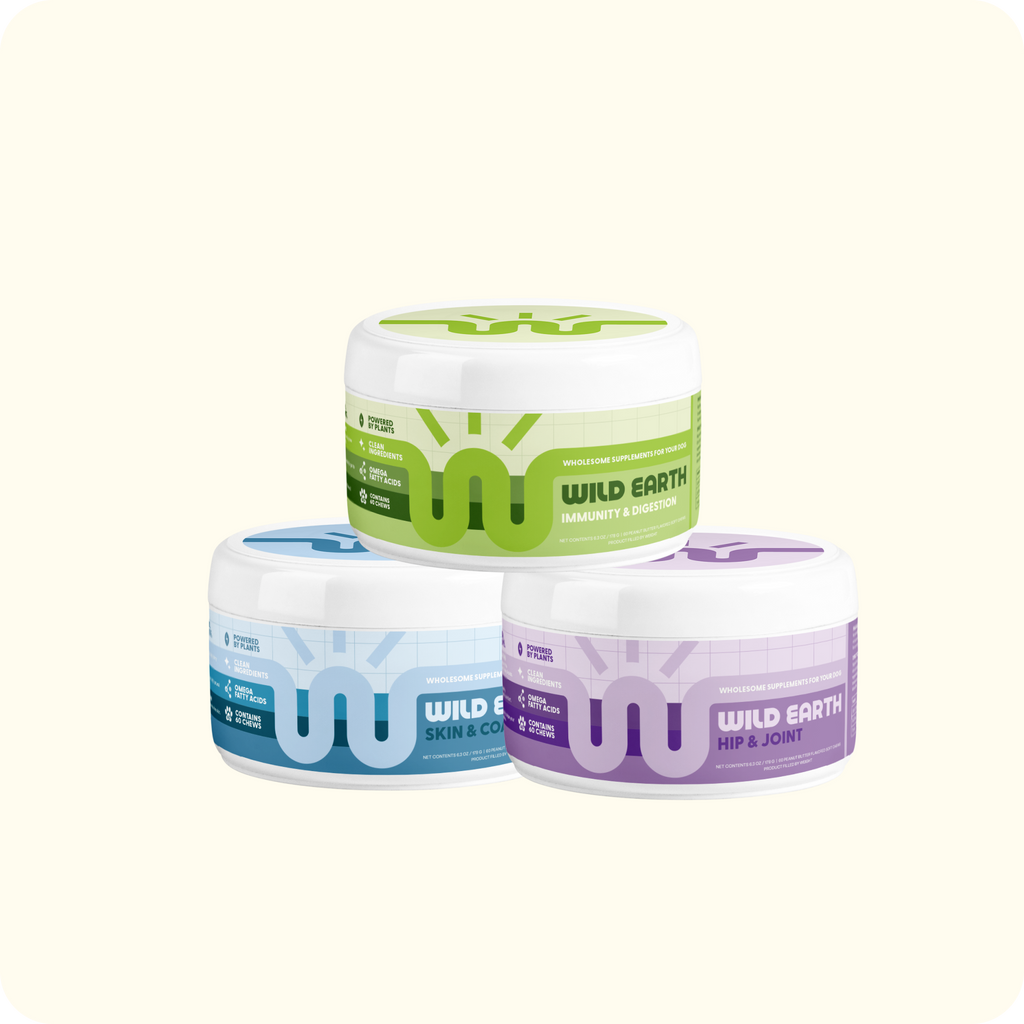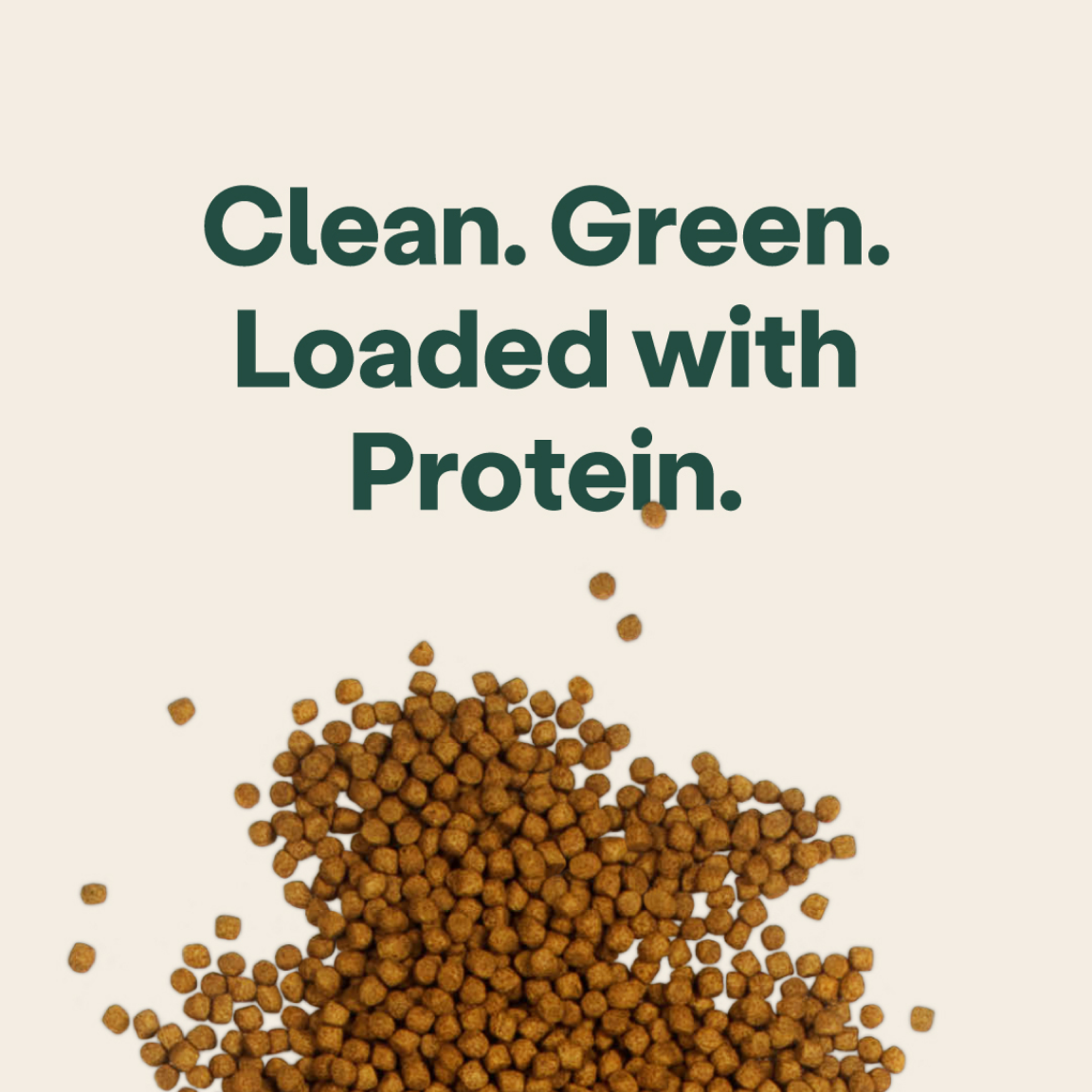
Protein: How Much is Too Much for Dogs?
Protein, protein, protein! Marketing tactics and social media are constantly telling us that dog food must be high in protein because dogs evolved from wolves. Yes, protein is an essential nutrient for dogs, and plays a very important role, but is more protein truly better?
In this blog, we'll explore protein and its role in the body, along with whether there is such a thing as too much of a good thing.
How Much Protein Does an Adult Dog Need?
Whether from animal or non-animal sources, The Association of American Feed Control Officials (AAFCO) recommends a minimum protein content of 18% dry matter for adult maintenance. Based on calorie content, this means that an adult dog should receive a minimum of 45 g of protein per 1000 kcal for adult maintenance.
Of course, more active dogs and senior dogs for example, require a higher amount of protein. In order to take into account the needs of different dogs, we have created two diets with differing amounts of protein.
What is Protein?
Proteins are made up of amino acids, which are classified as essential, non-essential, and conditionally essential. There are 20 amino acids which can come together in a wide variety of numbers and sequences to make different proteins with different functions. Dogs do NOT have a protein requirement. They have a requirement for amino acids and nitrogen.
Essential amino acids are those that must be obtained from the diet, whereas non-essential amino acids are those that can be made by the body. Conditionally essential amino acids are those that must come from the diet during times of stress, such as disease.
Amino acids are the building blocks of protein, and protein plays many critical roles in the body. Proteins are the main structural component of organs and tissues such as muscle, function as hormones and enzymes, and provide a source of energy.
Is All Protein Equal?
Protein sources vary in level of quality. Protein quality refers to the efficiency by which amino acids from food are converted into tissue. That efficiency depends on protein source, concentration of essential amino acids in the food, and their bioavailability. Protein sources that are highly digestible and provide all 10 essential amino acids in relatively appropriate amounts are considered high-quality, or ‘complete’, and this can be true for both plant and animal sources. Soybean meal, for example, is designated as a “good” quality protein in the Small Animal Veterinary Nutrition Textbook. Furthermore, studies have concluded that yeast and soy are considered appropriate alternatives to poultry meal as the main protein source in dry, extruded canine diets (Reilly et al., 2021; Clapper et al., 2001).
While it is true that many animal sources of protein are considered high quality, such as chicken and beef, this is not always the case for the meat sources used in pet food. Rendered byproduct meals commonly used in pet foods, for example, have much lower amino acid digestibility, and are therefore lower in protein quality, than raw animal meals (Cramer et al., 2007). These animal sourced ingredients, specifically chicken and beef, are also some of the most common food allergens for dogs.
Why are Different Protein Sources Used in a Single Pet Food?
Even if a protein is ‘complete,’ most dog food manufacturers make use of protein complementation when formulating complete and balanced diets
Protein complementation is the use of different protein sources with complementary amino acid profiles to create a complete amino acid profile. It is a common practice in both plant-based and meat-based dog foods. This is why you will often see plant sources of protein, such as yeast and soy, used in meat-based dog food, and why dog foods may contain more than one protein source. Generally, the higher quality the protein, the less complementation is needed.
Fun fact: Yeast contains all 10 essential amino acids dogs need and is highly digestible.
Does Protein Have to be the First Ingredient?
We have been conditioned to look for meat as the first ingredient, and believe this to be the true marker as to whether a dog food is “bad” or “good”. This can be misleading, however. For example, raw chicken is a quality item, but contains up to 73% water. After cooking, most of that moisture is lost, reducing the meat content to just a fraction of its original weight. Therefore, even if chicken is listed as the first ingredient, once water loss is accounted for, it would drop down on the ingredients list.
The fallacy that meat must be the first ingredient on an ingredient list has also led to the common practice of ingredient splitting. Ingredient splitting is a way to artificially boost a desirable item (like meat for example) to a higher spot on the ingredient list while lowering the ranking of a less desirable ingredient. The ingredients on an ingredient list are listed in order of its precooking weight. Let’s consider an example where a manufacturer creates a dog food that contains rice as the main ingredient of the recipe, and some chicken. An ingredient list would have rice listed as the first ingredient. If the manufacturer breaks rice into smaller portions of similar ingredients, however, such as white rice and brown rice, then they can fall further down on the ingredient list and chicken can then be listed as the first ingredient.
Lastly, several grain ingredients such as barley, sorghum, brown rice and barley, which are commonly used in pet food are high in protein. If these are high up in the ingredients list then they are contributing to the protein content of the food.
What Happens with Excess Protein
If more protein is eaten than is needed, it will be stored as fat. We are constantly bombarded with “the higher the protein, the better” but there is no nutritional reason that supports providing excessive amounts of dietary protein. After the nitrogen and amino acid requirements are met, additional protein provides no additional benefit and excess protein adds unnecessary cost to food (Hand et al., 2010). Excess protein is used for energy, and as an energy source, protein is no better than a digestible carbohydrate.
How Much Protein Does Wild Earth Contain?
Based on dry matter, Wild Earth formulas contain:
- Wild Earth Performance Formula contains 31% protein on a dry matter basis
- Wild Earth Maintenance formula contains 26% protein on a dry matter basis
Based on calorie content, Wild Earth formulas contain:
- Wild Earth Performance formula contains 85.9 grams of protein per 1000 kcal.
- Wild Earth Maintenance formula contains 66.6 grams of protein per 1000 kcal.
We have made sure to provide a higher amount of protein while not providing an excessive amount that would likely serve the same function as a carbohydrate.









































